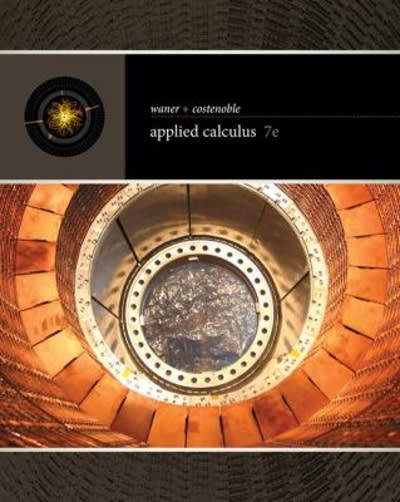Question
Apply the Box-Jenkins method (transform to stationarity if necessary and identify the time series model(e.g., ARMA(p,q))) for the luteinizing hormone data. Write down the algebraic
Apply the Box-Jenkins method (transform to stationarity if necessary and identify the time series model(e.g., ARMA(p,q))) for the luteinizing hormone data. Write down the algebraic expression of the fitted model. How is your "final" model compared with an AR(3) ? Use your final model to forecast the next 24 luteinizing hormone measurements
Code EXAMPLE FROM BOOK
######################################################## #3.5: ESTIMATION/FITTING ########################################################
library(astsa) #Example 3.27(text). AR(2): xt=1.5x(t-1)-.75x(t-2) +wt set.seed(8675309) ar2.sim=arima.sim(list(order = c(2,0,0), ar = c(1.5,-0.75)), n = 144) acf2(ar2.sim)
########### #estimation with goodness-of-fit diagnostics sarima(ar2.sim, 2,0,0) sarima(ar2.sim, 2,0,0, no.constant=TRUE) #Example 3.29 (text): MA(1), xt= wt + theta w(t-1) , theta=0.9. set.seed(2) ma1 = arima.sim(list(order = c(0,0,1), ma = 0.9), n = 150)
########### #estimation with goodness-of-fit diagnostics sarima(lh, 1,0,0) sarima(lh, 1,0,0, no.constant=TRUE)
#MODEL: x[t] = 0.8413*w[t-1] +w[t]
#ARMA(1,1) , phi =0.83, theta= -0.43. set.seed(2786) arma11.sim = arima.sim(list(order = c(1,0,1), ar=0.83, ma = -0.43), n = 150) ########### #estimation with goodness-of-fit diagnostics sarima(arma11.sim,1,0,0) #MODEL: Subtract muhat from x[t] only like #(x[t]- (-0.2487) ) = 0.7958*(x[t-1]-(-0.2487)) - 0.2913*w[t-1] + w[t]
#But since the p-value is large for 'xmean' (meaning mu_xt = 0) then sarima(arma11.sim, 1,0,0, no.constant=TRUE)
#Hence, MODEL: x[t] = 0.7958*x[t-1] - 0.2913*w[t-1] + w[t]
############# #Recruitment data #estimation with goodness-of-fit diagnostics acf2(rec) sarima(rec, 13,0,0) #Hence, MODEL: x[t]-61.85 = 1.35*(x[t-1]-61.85) - 0.46*(x[t-2]-61.85) + w[t] #OR sarima(rec, 13,0,0, fixed=c(NA,NA,0,0,0,0,0,0,0,0,0,0,NA, NA) )
#OR sarima(rec, 13,0,0, fixed=c(NA,NA,0,NA,NA,0,0,0,0,0,0,0,NA, NA) )
#auto.arima auto.arima(rec) sarima(rec,1,1,0,0,0,2,12, no.constant=TRUE)
#Monthly lung disease deaths for females (fdeaths) #auto.arima acf2(fdeaths) sarima(fdeaths, 4,0,0 ) #OR sarima(rec, 4,0,0, fixed=c(NA,0,0,NA, NA) )
auto.arima(fdeaths) sarima(fdeaths,0,0,0,2,1,0,12, no.constant=FALSE)
########################################### #Section 3.4: FORECASTING # ###########################################
#Global warming data: temp deviations (1880-2015) library(astsa) data(globtemp) plot(globtemp) str(globtemp) time=time(globtemp) time2=time^2 time(globtemp) dat=cbind(globtemp,time,time2) mod1=lm(globtemp~I(time)+ I(time2), dat) mod1 #plot fit plot(time,globtemp, xlim=c(1880,2015), ylim=c(-0.5, 1),frame.plot=FALSE) lines( 2.844e+02 -2.992e-01*time +7.860e-05*time2, lwd=3, col="red")
#residuals qqnorm(resid(mod1),frame.plot=FALSE) qqline(resid(mod1))
#prediction for 2050 predict(mod1, data.frame(time=2050, time2=2050^2 ) , interval = "conf",level=0.95)
#Recruitment data library(astsa) sarima.for(rec,24,2,0,0) #with +/- 1,2*SE (prediction error bounds)
#OR library(astsa) sarima.for(fdeaths,24,0,0,0,2,1,0,12) #with +/- 1,2*SE (prediction error bounds)
Step by Step Solution
There are 3 Steps involved in it
Step: 1

Get Instant Access to Expert-Tailored Solutions
See step-by-step solutions with expert insights and AI powered tools for academic success
Step: 2

Step: 3

Ace Your Homework with AI
Get the answers you need in no time with our AI-driven, step-by-step assistance
Get Started


